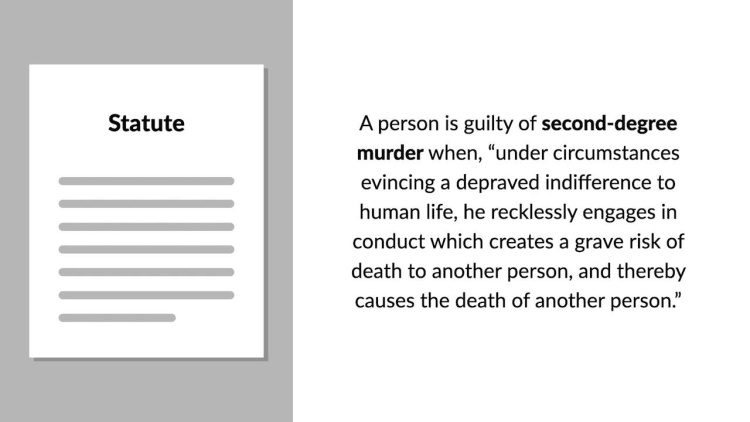Henderson v. Kibbe
United States Supreme Court
431 U.S. 145 (1977)
- Written by Samantha Arena, JD
Facts
Kibbe (defendant) and his co-defendant saw Stafford at a bar, intoxicated and displaying money. The defendants agreed to give Stafford a ride and decided to rob him. Kibbe slapped Stafford, took his money, and made him lower his pants and remove his boots. The defendants abandoned Stafford on a dark road in the snow, without his coat, shoes, and glasses, where he got hit and killed by a speeding truck. The driver testified that he was traveling 10 miles over the speed limit and did not understand warnings about Stafford from other cars. The driver saw Stafford in the road, but did not swerve or stop before hitting him. Kibbe and his co-defendant were convicted pursuant to N.Y. Penal Law § 125.25(2), which provides that a person is guilty of second-degree murder when “under circumstances evincing a depraved indifference to human life, he recklessly engages in conduct which creates a grave risk of death to another person, and thereby causes the death of another person.” No jury instruction on causation was requested by either party, and none was given. Instead, the trial judge defined “recklessly” as being aware of and consciously disregarding a substantial and unjustifiable risk that a certain result will occur. The New York Court of Appeals affirmed the conviction, stating that it only must be shown that the ultimate harm is something that should have been foreseen. The court of appeals did not address Kibbe’s claim of inadequate jury instructions, because the issue was not raised in the trial court. Kibbe then filed a writ of habeas corpus in federal district court, which was rejected. The United States Court of Appeals for the Second Circuit reversed, finding that failure to instruct on causation created an impermissible risk that the jury did not make the required finding of causation beyond a reasonable doubt.
Rule of Law
Issue
Holding and Reasoning (Stevens, J.)
What to do next…
Here's why 899,000 law students have relied on our case briefs:
- Written by law professors and practitioners, not other law students. 47,000 briefs, keyed to 994 casebooks. Top-notch customer support.
- The right amount of information, includes the facts, issues, rule of law, holding and reasoning, and any concurrences and dissents.
- Access in your classes, works on your mobile and tablet. Massive library of related video lessons and high quality multiple-choice questions.
- Easy to use, uniform format for every case brief. Written in plain English, not in legalese. Our briefs summarize and simplify; they don’t just repeat the court’s language.






